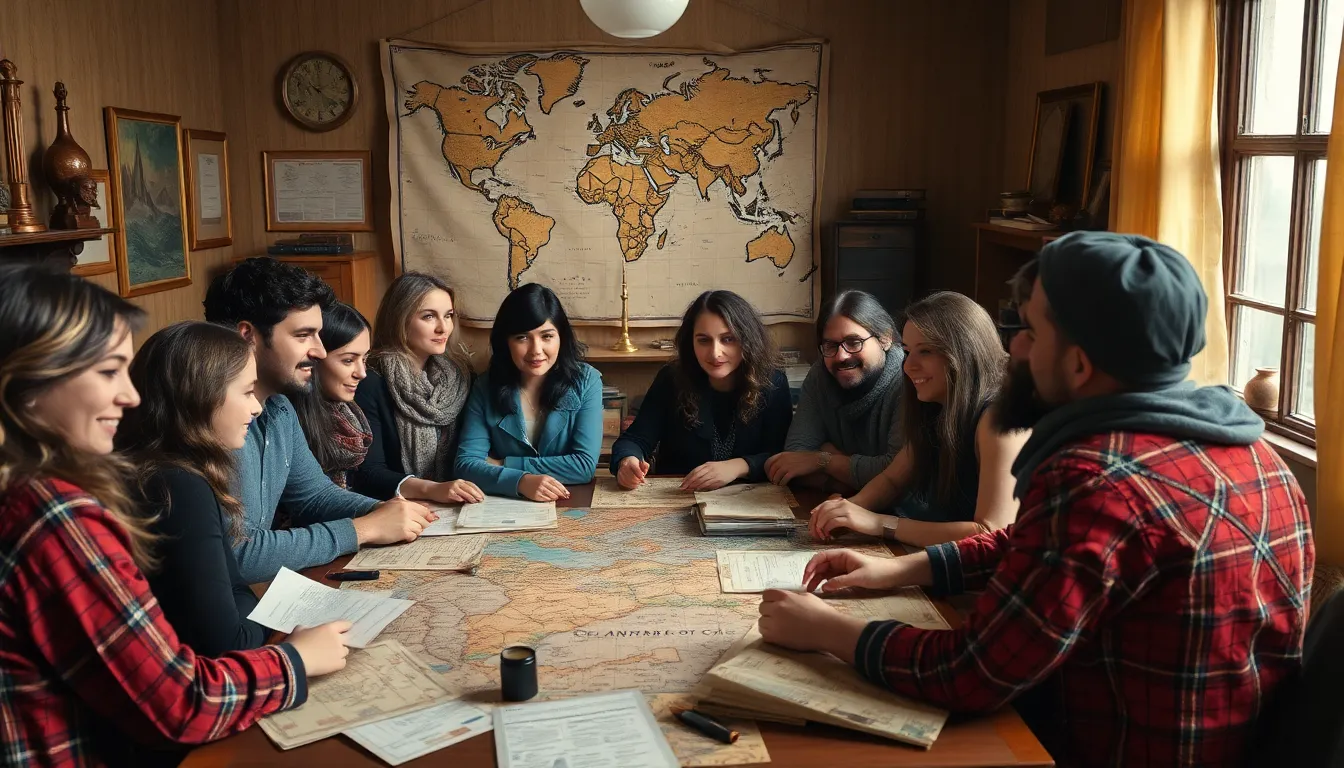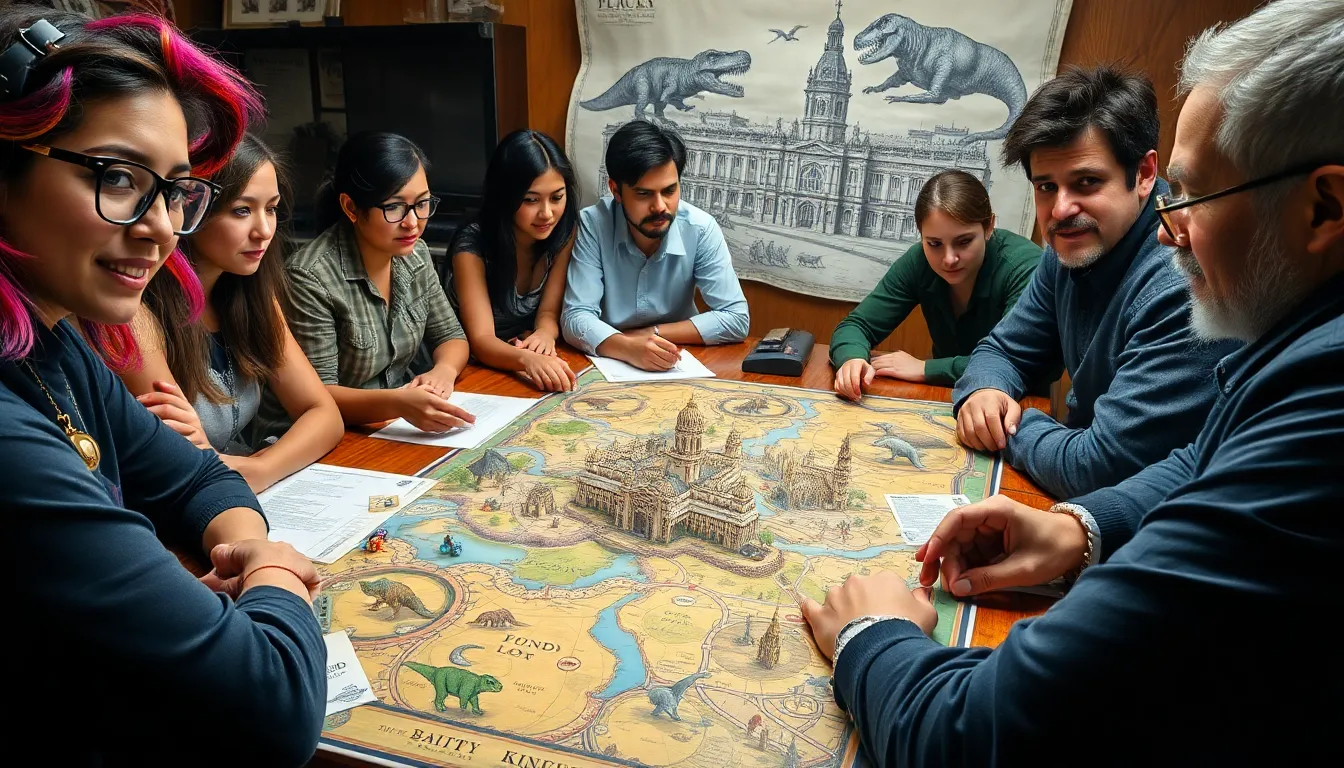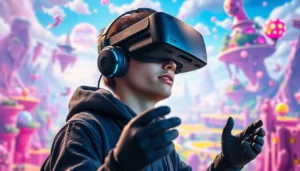Table of Contents
ToggleImagine a world where dinosaurs roam the streets of Victorian London or where the Roman Empire never fell. Alternate history RPGs take players on wild journeys through time, challenging them to rewrite the past and shape their own destinies. These games spark creativity and let imaginations run wild, all while keeping history enthusiasts on their toes.
What Is Alternate History RPG?
Alternate history RPGs allow players to explore reimagined historical timelines through imaginative storytelling. In these games, participants create characters and navigate scenarios that diverge from actual historical events. Players might experience worlds where the Roman Empire never fell or where World War II had a different outcome.
Distinctively, alternate history RPGs stimulate creativity by encouraging players to consider “what if” scenarios. For instance, some may depict technologies that developed in different ways. Interesting settings might include a 19th-century America ruled by British monarchy or a dystopian society surviving after a nuclear disaster.
Game mechanics often focus on collaboration and decision-making. Players work together to shape narratives while confronting unique challenges specific to their alternate reality. Character development plays a crucial role, as participants often embody figures that might exist in these unconventional worlds.
Many RPG systems cater to historical accuracy while still allowing creative liberties. Resources like sourcebooks and guides help players understand historical contexts, enhancing the gaming experience. Popular titles include “GURPS Alternate Earths” and “Timeline” which offer extensive background for various settings.
Engagement in alternate history RPGs fosters discussion about real historical events. This interaction promotes critical thinking and appreciation of history. Overall, these games provide an innovative platform for storytelling by blurring lines between reality and fiction.
Key Elements of Alternate History RPG

Alternate history RPGs hinge on world-building and character development, creating immersive experiences for players. Each element contributes to unique gameplay and storytelling.
World-Building Techniques
World-building techniques set the stage in alternate history RPGs. Players dive into scenarios where history diverged significantly, prompting innovative settings. Researching historical events adds depth to these worlds. Incorporating famous figures and landmark occurrences connects players to real-life implications. Game masters often employ timelines to visualize changes, helping participants navigate alternate paths. Giving players the agency to influence events encourages creativity and engagement. Many successful RPGs feature detailed settings that reflect diverging histories, allowing for nuanced explorations. Players collaborate to enhance world details through their characters’ actions and decisions.
Character Development
Character development defines the player experience in these RPGs. Shedding light on motivations and backgrounds enriches interactions and narratives. Each character embodies a persona relevant to the alternative timeline, whether it’s a Victorian scientist uncovering hidden technologies or a soldier in a reimagined World War. Players often create complex histories, enhancing realism and relatability. Character arcs may evolve based on the unfolding events and decisions made during gameplay. Encouraging players to build connections with their characters increases investment in the story. Mechanics supporting character growth, like skill advancements or relationships, make the gameplay dynamic and engaging.
Popular Alternate History RPGs
Alternate history RPGs attract players with unique interpretations of historical events. They offer imaginative settings where familiar history takes unexpected turns.
Notable Systems and Settings
Several RPG systems stand out for their alternate history content. “GURPS Alternate Earths” presents diverse timelines where players can explore various historical scenarios. “Timeline” provides extensive source materials, enabling rich narratives built around historical accuracy. “Tales from the Loop” merges nostalgia with alternate realities, blending sci-fi elements into the past. “Renaissance – The Game of the Age” allows players to navigate a world influenced by historical figures and events like the Renaissance. Each system enhances creativity while immersing players in captivating settings.
Community Contributions
RPG communities play a vital role in developing alternate history content. Online forums host discussions surrounding innovative campaign ideas and narrative structures. Players regularly share homebrew rulebooks, enhancing existing mechanics for deeper gameplay. This collaborative effort enriches the genre, fostering creativity and experimentation. Annual conventions feature panels dedicated to alternate history RPGs, showcasing new systems and setting explorations. These gatherings provide valuable networking opportunities for game creators and players alike, resulting in fresh ideas that fuel ongoing interest in alternate history gaming.
Gameplay Experiences and Mechanics
Gameplay in alternate history RPGs centers on imaginative storytelling through collaborative mechanics. Players create characters, each existing in a world shaped by distinct historical divergences. Examples include scenarios where the American Civil War had different outcomes or where ancient civilizations thrived into the modern era.
Character progression features prominently, as players develop backstories and relationships reflective of their alternate universes. Mechanics that foster character growth enhance depth, leading to engaging experiences. Many games utilize skill trees or point systems to define abilities, ensuring players grow in complexity.
Decision-making holds an essential role in gameplay. Players must navigate challenging moral dilemmas influenced by their unique settings. For instance, characters might face choices that determine allegiances during an alternate World War II. This dynamic decision-making promotes discussion and collaboration among participants.
World-building techniques serve as the backbone for many alternate history RPGs. Game masters craft rich environments based on extensive research into actual historical events. Using sourcebooks, they incorporate pivotal figures and settings, making the game world feel alive and immersive. Timelines visualize changes, illustrating how these diverged paths affect future events.
Rulesets offer flexibility, permitting a blend of historical accuracy and creative liberties. Popular systems like “GURPS Alternate Earths” and “Tales from the Loop” provide frameworks that encourage adaptation. Players often experiment with homebrew content, enhancing their gaming experiences further.
Communities surrounding these RPGs thrive, with forums dedicated to sharing campaign ideas and mechanics. Conventions showcase emerging games and allow networking among creators. As engagement in alternate history RPGs grows, participants deepen their understanding of history while enjoying unique narratives.
Alternate history RPGs provide a unique avenue for creativity and exploration. By reimagining historical events players can dive into engaging narratives that challenge their understanding of history. These games not only entertain but also encourage critical thinking about the implications of historical choices.
The collaborative nature of gameplay fosters community and discussion among players. With a wealth of resources and innovative ideas shared within RPG communities the genre continues to thrive. As players craft their own alternate realities they enrich the storytelling experience while gaining a deeper appreciation for the complexities of history.
Whether through established titles or homebrew creations alternate history RPGs invite players to imagine the impossible and explore the vast possibilities of what might have been.




